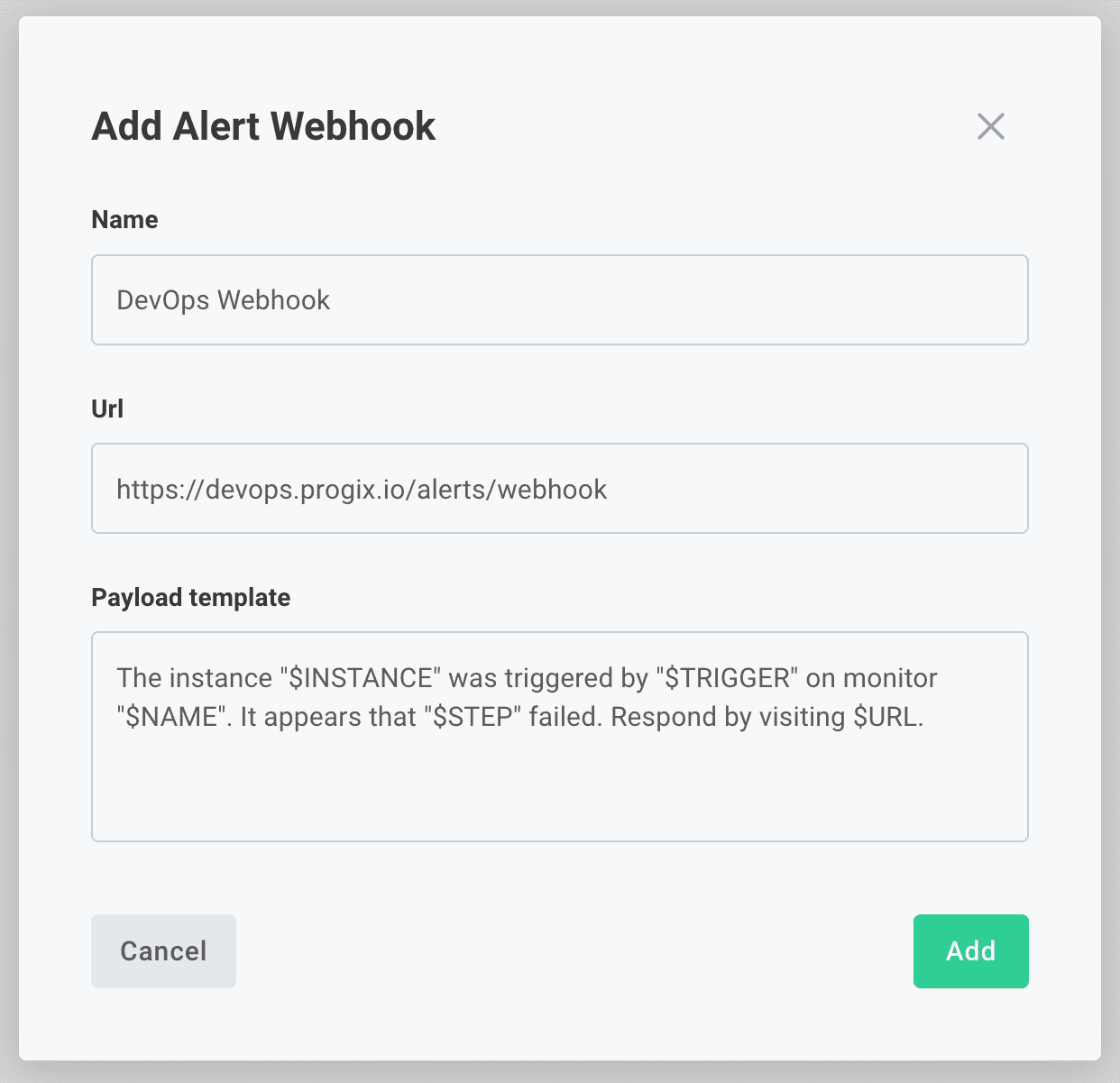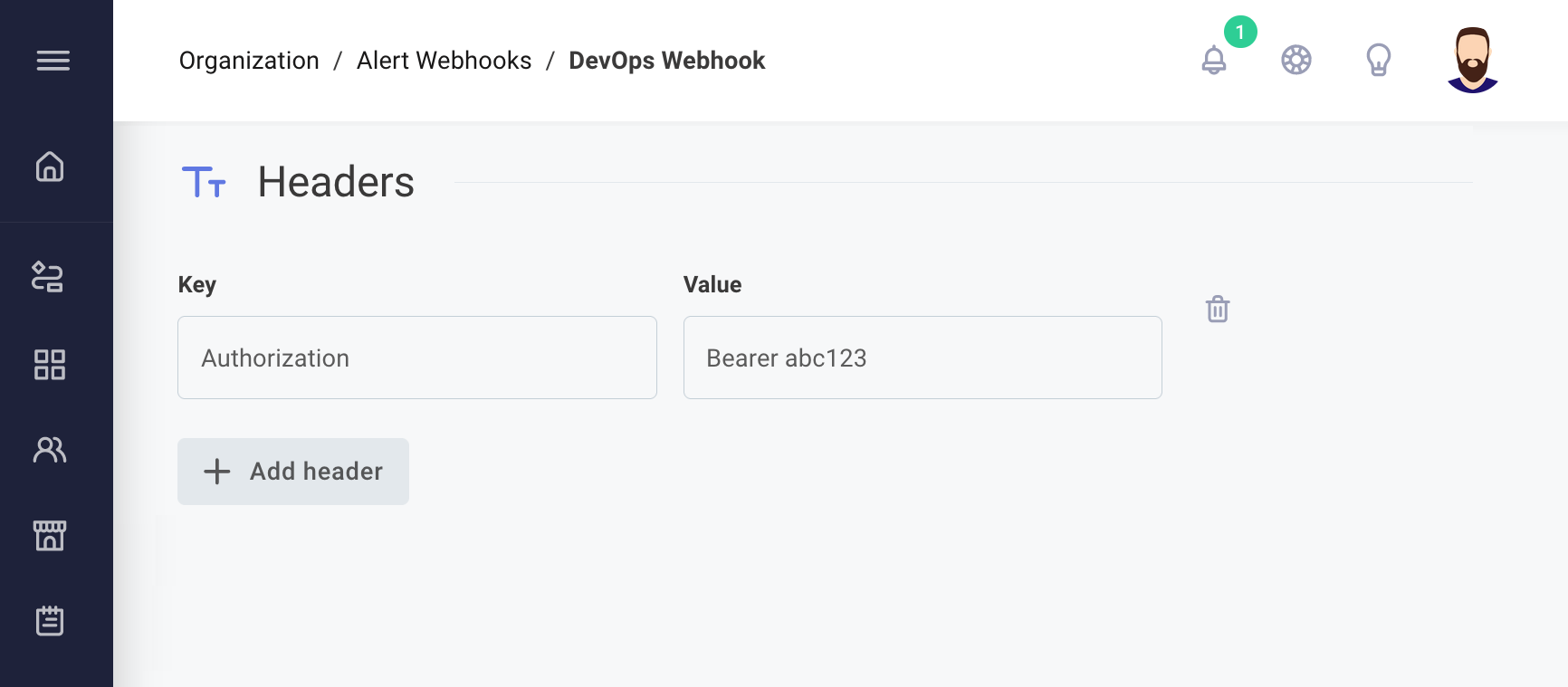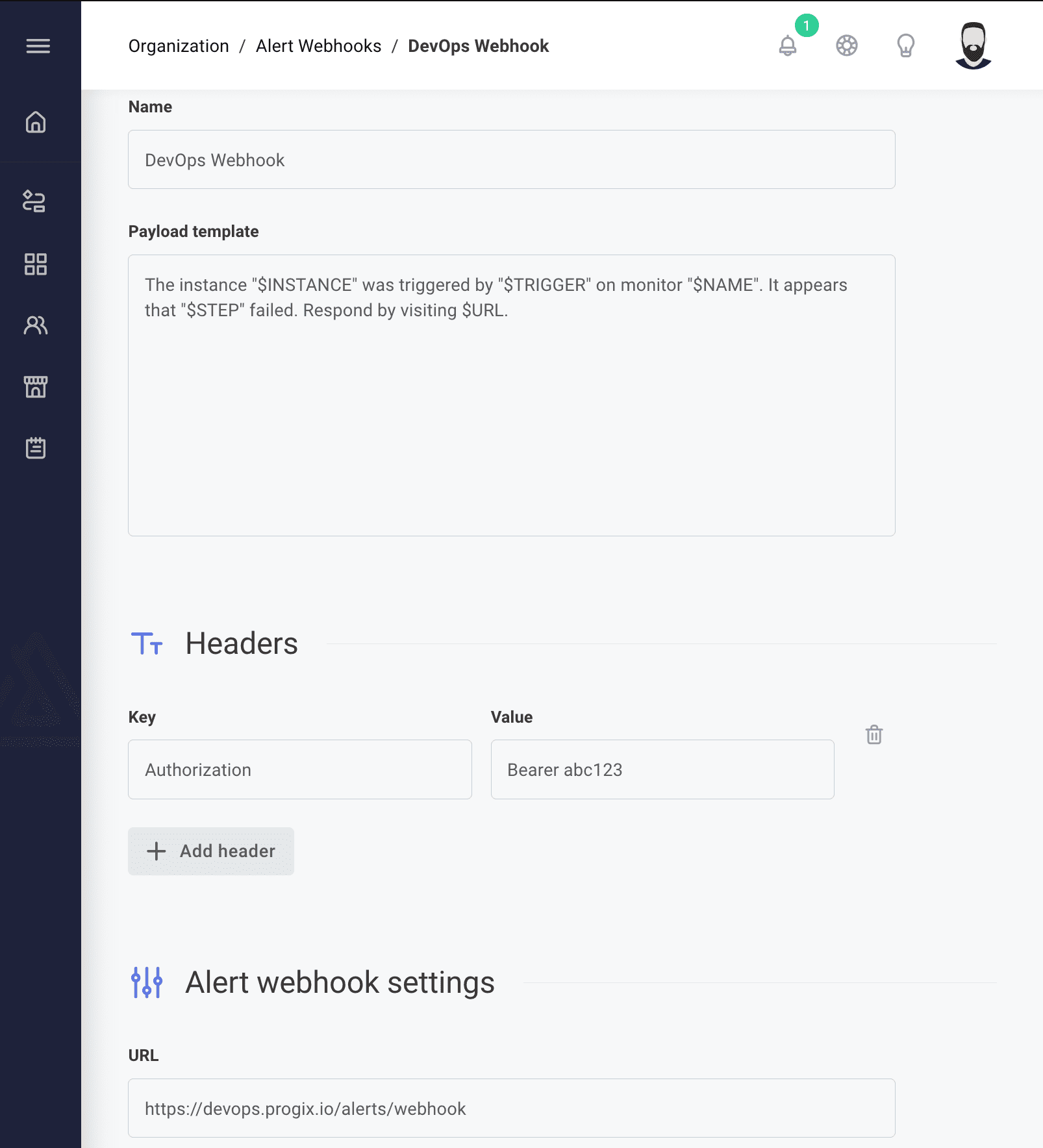Alert Webhooks
Alert webhooks
Beyond email notifications, you can configure alert monitors to send HTTP requests to webhook endpoints with customizable payloads. You can use alert webhooks to integrate with incident management systems like PagerDuty or OpsGenie, custom DevOps alert endpoints, or any HTTP-based alerting service.
Creating alert webhooks
- Web App
- CLI
- API
To create or modify a webhook endpoint, navigate to the Settings page and select the Alert Webhooks tab. Click the + Add alert webhook button to configure the webhook name, URL, and payload template.
You can reuse alert webhooks across multiple alert monitors through configurable payload templates. In the Payload Template section, you can use predefined variables that are dynamically replaced when an alert monitor triggers:
$SUBJECT- The static string "Prismatic.io Alert"$NAME- The name of the alert monitor that triggered$INSTANCE- The name of the instance associated with the triggered alert monitor$INSTANCE_ID- The global identifier of the instance (theSW5z....portion of the instance URL)$EXECUTION_ID- The global identifier of the execution$CUSTOMER- The name of the customer to whom the instance is deployed$CUSTOMER_EXTERNAL_ID- The external ID of the customer to whom the instance is deployed$FLOW- The name of the flow that was executing when the alert monitor triggered$TRIGGER- The name of the alert trigger (e.g., "Execution Failed")$STEP- The name of the step within the integration that triggered the alert monitor$URL- A direct link to the triggered alert monitor

After creating the alert webhook, you can update the name, URL, or payload template, and optionally configure HTTP headers. Headers are commonly used for authentication, such as passing an API token to the webhook endpoint.

To create an alert webhook, use the alerts:webhooks:create subcommand:
prism alerts:webhooks:create \
--name 'Devops Webhook' \
--headers '{"Authorization": "Bearer abc123"}' \
--payloadTemplate 'The instance "$INSTANCE" was triggered by "$TRIGGER" on monitor "$NAME". It appears that step "$STEP" generated an error. Respond by visiting $URL.' \
--url https://devops.progix.io/alerts/webhook
To create an alert webhook, use the createAlertWebhook mutation:
mutation {
createAlertWebhook(
input: {
name: "Devops Webhook"
url: "https://devops.progix.io/alerts/webhook"
headers: "{\"Authorization\": \"Bearer abc123\"}"
payloadTemplate: "The instance \"$INSTANCE\" was triggered by \"$TRIGGER\" on monitor \"$NAME\". It appears that step \"$STEP\" generated an error. Respond by visiting $URL."
}
) {
alertWebhook {
id
}
}
}
Editing existing alert webhooks
To modify an existing alert webhook, navigate to Settings in the left-hand sidebar and select the Alert Webhooks tab. Select the webhook to edit. You can update the webhook name by clicking the name at the top of the page. In the Details tab, you can modify the webhook template, payload template, or URL, and configure optional HTTP headers for authentication or other requirements.

Deleting alert webhooks
- Web App
- CLI
- API
To delete an alert webhook, navigate to the Settings page from the left-hand sidebar. Select the Alert Webhooks tab and choose the webhook to delete. On the webhook's page, click Delete Alert Webhook. Confirm the deletion by clicking Remove alert webhook.
Retrieve the webhook's ID with:
prism alerts:webhooks:list --extended
Then delete the webhook using:
prism alerts:webhooks:delete ${WEBHOOK_ID}
Delete an alert webhook using the deleteAlertWebhook mutation:
mutation {
deleteAlertWebhook(
input: {
id: "QWxlcnRXZWJob29rOjczOGNiNTM2LWFhMGMtNGUwNS05ZTBmLTQ5ZDMzZDE5ODYwNA=="
}
) {
alertWebhook {
id
}
}
}